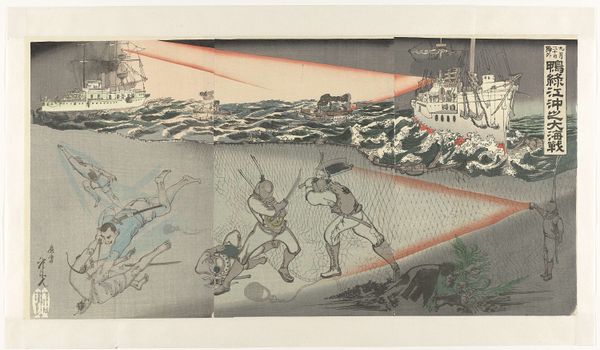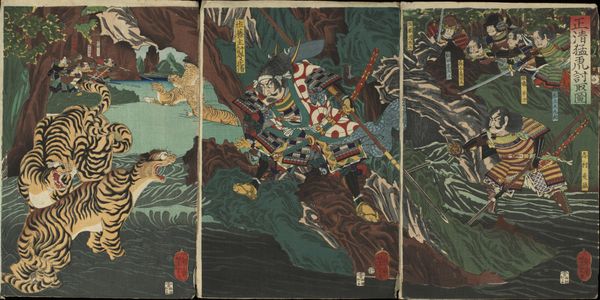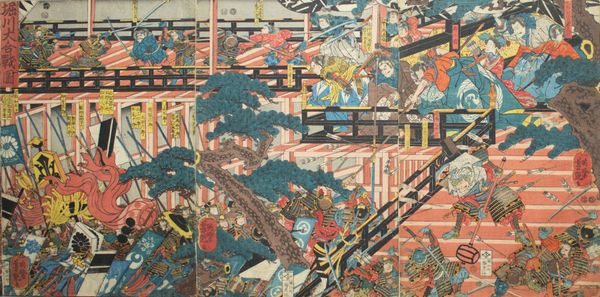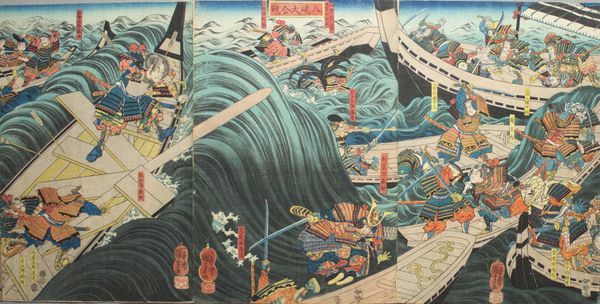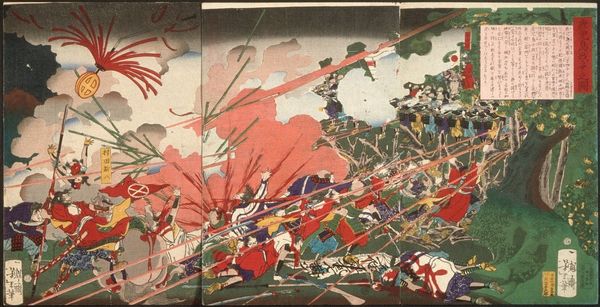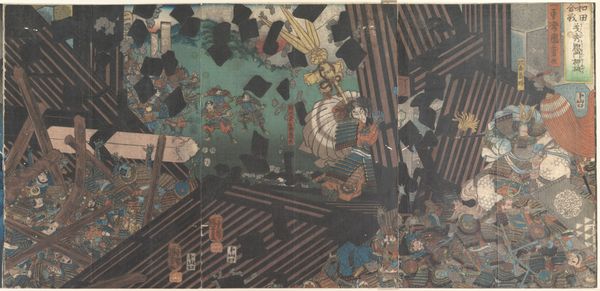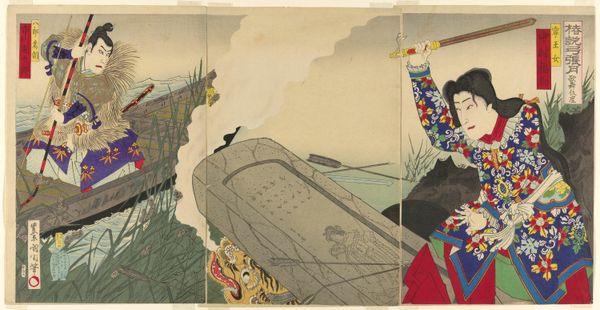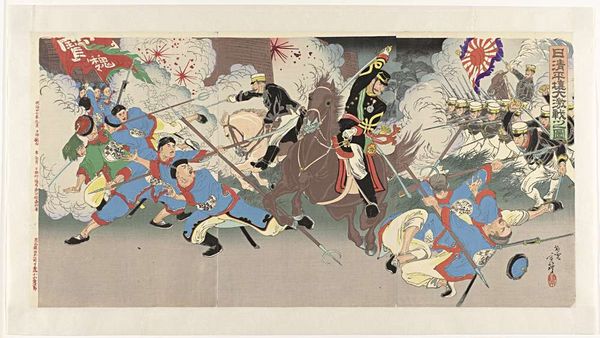
Battle of Nanba (Nanba senki no uchi) after 1871
0:00
0:00
Copyright: Public Domain
Editor: Right, next up we have Kawanabe Kyōsai's woodblock print, "Battle of Nanba," created after 1871. It's held at The Art Institute of Chicago. Looking at this, my first thought is: dynamic chaos! The diagonal lines and the explosion of figures—it's a real whirlwind. What do you see in this piece? Curator: It is indeed a striking image! I see Kyōsai using the *ukiyo-e* tradition to depict, not simply represent, a powerful historical event through a politically charged lens. Notice how he places figures known to resist imperial powers centrally. Considering the work was made during the Meiji Restoration, after 1868, can you imagine how this historical narrative is used to comment on the public’s perception and understanding of power structures? Editor: So, by showing this chaotic battle and seemingly highlighting figures who fought against the restoration, he's maybe critiquing the new order? Almost like a form of subtle protest? Curator: Precisely. These prints circulated widely, shaping public memory. It's worth considering where these images were displayed, who was buying them, and what that might tell us about the artist's socio-political aims, given this was no longer a feudal system with the Shogun at its head, but the symbolic head of state was now the emperor Meiji. What about the style? Anything catch your eye? Editor: The colours! The use of such bright colours to depict what must have been such a gruesome scene almost trivializes the events. It's also clear from this triptych style this wasn't necessarily meant to be understood by just a few people but rather widely distributed. Curator: Exactly, and we have the Art Institute of Chicago to thank for making it more widely accessible in the present day. Food for thought indeed! Editor: This has been fascinating. Thanks for the deeper understanding, and for framing my appreciation for this piece!
Comments
No comments
Be the first to comment and join the conversation on the ultimate creative platform.
